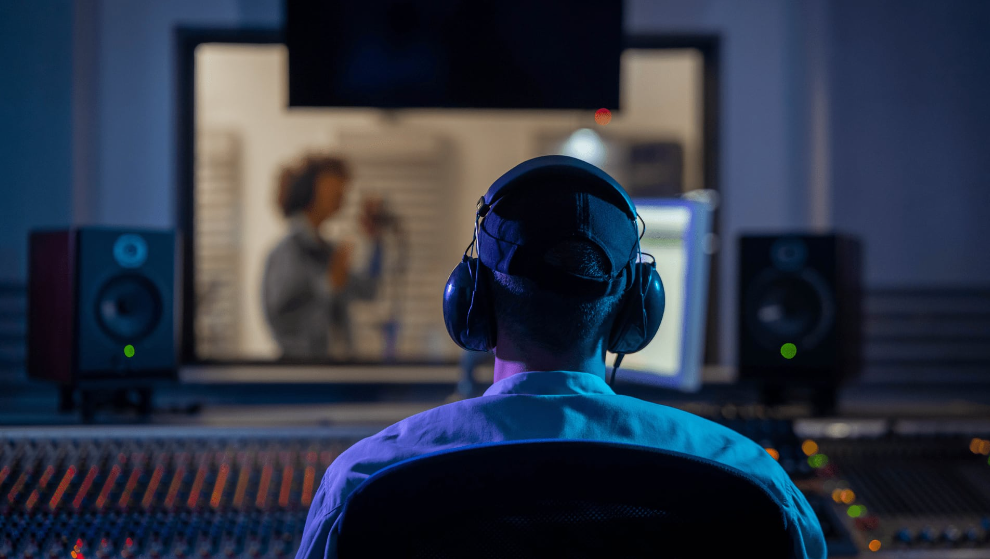Behind The Scenes: The Process of Video Dubbing

When it comes to film and media, video dubbing is a vital process that helps improve the viewer’s experience, connect people who speak different languages, and make content available worldwide. Video dubbing, also called revoicing or post-synchronization, involves replacing the original dialogue in a video with translated dialogue in a video translated dialogue in another language. This technique ensures that the story and emotions conveyed by the actors are maintained, while also making the content accessible to a wider audience.
In the process of video dubbing services, the original audio of a video, such as a movie, TV show, or documentary, is replaced with a translated version in a different language. This technique can indeed play a significant role in bringing different cultures together in several ways:
1) Cultural Exchange: Video dubbing allows people from different linguistic backgrounds to access content that might have originally been produced in a language they don’t understand. By providing translated versions, individuals can experience and appreciate the art, stories, and ideas from cultures they might not have had direct exposure to otherwise.
2) Accessibility: Dubbing services make content more accessible to a global audience. It breaks down language barriers, enabling people to enjoy movies and shows regardless of their language proficiency. This inclusivity can foster a sense of unity and shared experience among diverse groups.
3) Empathy and Understanding: When people are exposed to stories from different cultures through dubbed content, they can gain insight into the lives, values, and perspectives of people from other parts of the world. This exposure can promote empathy and understanding by showing that despite cultural differences, human experiences and emotions are often universal.
4) Cultural Preservation: Video dubbing can help preserve cultural heritage by allowing stories and narratives to transcend linguistic boundaries. Stories that might be fading away due to language barriers can be revitalized through translation and dubbing, ensuring their continuation for future generations.
5) Fostering Multilingualism: Dubbed content encourages people to learn and engage with new languages. Viewers might pick up words and phrases from the dubbed versions, sparking an interest in language learning and promoting cross-cultural communication.
6) Promoting Tolerance: When people are exposed to diverse perspectives and cultures through dubbed content, it can challenge stereotypes and misconceptions. This exposure can lead to increased tolerance and a more open-minded outlook on the world.
7) Economic and Cultural Exchange: Dubbing services also provide economic benefits by making content accessible to a wider range of markets. It encourages the exchange of media, entertainment, and creative ideas across borders, fostering cultural exchange on a broader scale.
8) Collaboration and Innovation: The process of dubbing involves collaboration between professionals from different cultures, including voice actors, translators, and production teams. This collaborative effort can lead to the development of new techniques, ideas, and creative solutions that emerge from the merging of diverse perspectives.
KEY ROLES IN THE PROCESS OF VIDEO DUBBING
The video dubbing process involves several key roles to ensure that the final dubbed version of a video is of high quality and effectively conveys the intended message.
A good dubbing company would look into casting the best voice actors, scriptwriters, directors, and technicians, ensuring that the dubbing process is error-free and smooth as they play a crucial role here. Below are their respective roles:
1. Voice Actors:
a. Character Voices: Voice actors provide the voices for the characters in the original video. They are responsible for matching the tone, emotion, and personality of the original actors to ensure that the dubbed dialogue feels authentic.
b. Lip Sync: In some cases, voice actors need to match the lip movements of the original actors as closely as possible for a natural-looking dub.
c. Emotional Delivery: They must convey the appropriate emotions and nuances required for each scene.
2. Directors:
a. Creative Direction: Directors oversee the overall creative direction of the dubbing process. They ensure that the dubbed voices match the original performances and capture the essence of the characters.
b. Casting: Directors play a crucial role in selecting the right voice actors for each character. They consider factors like vocal range, acting ability, and suitability for the role.
c. Performance Guidance: Directors guide voice actors during recording sessions. They may offer feedback on pronunciation, delivery, and emotional expression to achieve the desired result.
d. Quality Control: Directors ensure that the dubbed dialogue flows smoothly, syncs well with the video, and maintains consistency throughout the project.
3. Scriptwriters:
a. Adaptation: Scriptwriters translate and adapt the original script or dialogue into the target language. They aim to retain the original meaning and context while making it culturally relevant and natural-sounding.
b. Lip Sync Considerations: Scriptwriters may need to modify dialogue to match the lip movements of the characters in the video, ensuring a realistic dubbing experience.
c. Localization: In addition to translation, scriptwriters may adjust cultural references, jokes, and idioms to make them suitable for the target audience.
d. Timing and Pacing: They work on the timing and pacing of the dialogue to fit the visual cues and overall flow of the video.
4. Technicians:
a. Audio Engineering: Technicians handle the technical aspects of recording and mixing the dubbed audio. They ensure that the voice recordings are clear, free from background noise, and properly synchronized with the video.
b. Sound Effects and Music: Technicians may add sound effects and music to enhance the overall audio experience. These elements must complement the dubbed dialogue and the original soundtrack.
c. Quality Assurance: Technicians perform quality checks to identify and rectify any audio issues, ensuring a seamless and professional dub.
d. File Formatting: They prepare the final dubbed video files in the required formats for distribution, taking into account different media platforms and delivery methods.
Collaboration among these roles is crucial in producing a high-quality dubbed video that resonates with the target audience while preserving the integrity of the original content.
PROCESS OF VIDEO DUBBING
Video dubbing is the process of replacing the original audio in a video with a new audio track, typically in a different language or with improved audio quality. A professional dubbing company uses the following step-by-step guide for the video dubbing process:
1. Pre-Production:
a. Translation: The first step in dubbing is to translate the original script/dialogue from the source language to the target language. This translation should be accurate and culturally relevant.
b. Casting: Choose voice actors or dubbing artists who can perform the characters’ voices in the target language convincingly. Their voices should match the original actors’ voices as closely as possible.
c. Script Adaptation: Adapt the translated script to fit the lip-sync and timing of the original video. This may involve rephrasing sentences or adjusting the length of dialogue lines.
2. Recording:
a. Voice Recording: The selected voice actors or dubbing artists will perform their lines in a soundproof recording studio while watching the original video. They must synchronize their speech with the lip movements of the original actors.
b. Sound Engineering: Audio engineers may adjust the recorded voiceovers for volume, clarity, and consistency. They may also add sound effects and adjust background music if necessary.
3. Post-Production:
a. Audio Editing: The dubbed audio is edited to match the timing and lip movements of the original video. This may involve fine-tuning the timing of dialogue and making adjustments to ensure that the new audio sounds seamless.
b. Quality Control: Quality control checks are performed to ensure that the dubbing is of high quality. This involves reviewing the dubbed video to make sure the audio matches the video, and that there are no errors or inconsistencies.
c. Mixing: The final audio mix is created, which combines the voiceovers sound effects, and background music to create a balanced and immersive audio experience.
4. Finalization:
a. Syncing: The dubbed audio is synced with the original video using specialized software.
b. Exported: The final dubbed video is exported in the desired format and resolution.
5. Quality Assurance:
a. Screening: The dubbed video may be screened to a test audience to gather feedback and make any necessary adjustments.
b. Final Approval: The video is reviewed and approved by the client or production team.
6. Delivery:
a. Distribution: Once approved, the dubbed video can be distributed through various channels, such as television, streaming platforms, or DVDs.
Throughout the video dubbing process, it’s essential to maintain the integrity of the original video while ensuring that the new audio seamlessly integrates with the visuals. Effective video dubbing services require a combination of linguistic expertise, voice acting talent, and technical skills to create a final product that is engaging and culturally relevant in the target language.
CONCLUSION
“Dubbing is a significant service in media localisation fulfilment services”
DUBnSUB is a dubbing company with a top team of professionals with the proficiency to provide top-notch video dubbing services in over 70 languages. We extend our dubbing services at competitive costs through a mix of our own and extensive partner network of 200 dubbing studios and an experienced team of production managers.




